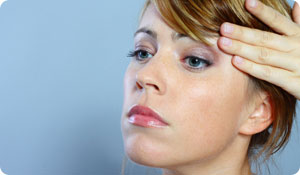
According to the American Society of Plastic Surgeons (ASPS), approximately 241,000 Americans opted for cosmetic eyelid surgery in 2007--making the procedure, also known as blepharoplasty, the fourth most common cosmetic surgery in the United States. What's fueling its popularity? As the ASPS explains, blepharoplasty can enhance the appearance of the eyelids, making patients look younger, more rested, and more alert.
Understanding the Procedure
More specifically, blepharoplasty can address a number of issues that affect the area surrounding the eyes as we get older, including:
- Loose, sagging skin or folds that interfere with the natural contour of the upper eyelid.
- Excess fatty deposits or puffiness in the upper eyelids.
- Bags, or excess fat, under the eyes.
- Droopiness of the lower eyelids, which exposes the white below the iris.
- Excess skin, wrinkles, and fines lines in the lower eyelid.
During blepharoplasty, external incisions are generally made along the natural skin lines of the eyelids, such as the upper-lid creases and/or below the lower lash line, or from the inside of the lower eyelid. The procedure generally takes a few hours and may be performed under local or general anesthesia. Afterward, patients usually experience swelling and bruising, which can take anywhere from a few weeks to several months to subside.
15 Questions to Ask Your Doctor
As with any cosmetic surgery, eyelid surgery generally begins with a consultation. At that time, you should discuss your goals and ask for a detailed summary of the procedure, the results you can expect, and the potential complications.
- In addition, be sure to ask the following questions:
- How many eyelid surgeries do you perform each year?
- How many years have you spent performing eyelid surgery?
- Are you board certified, and if so, with which board(s)?
- In which states are you licensed to practice surgery?
- What are the risks and complications associated with this procedure?
- How many additional operations can I expect as a result of this procedure over my lifetime?
- What are my options if I'm dissatisfied with the outcome of my eyelid surgery?
- If I'm unhappy with the results, is it possible to "reverse" the procedure? If so, what results can I expect?
- Will this surgery have any functional repercussions?
- How can I expect my results to look over time?
- What alternate procedures or products are available if I choose not to have this surgery?
- Do you have before-and-after photos I can look at, and which of those results are reasonable for me to expect?
- What's the most common complication you encounter with this procedure?
- What's your reoperation rate, and what's the most common type of reoperation you perform?
- Do you believe I'm an informed patient with realistic expectations who would be a good candidate for this procedure?
Blepharoplasty Financing Options
The costs of blepharoplasty vary depending on location, surgeon, and technique, but according to the ASPS, the national average surgeon's fee is $3,134. Keep in mind that this amount does not include costs associated with the surgical facility, anesthesia, medical tests, or prescriptions.
Although some insurance companies may cover eyelid surgery, it must be viewed as a medical necessity, as opposed to cosmetic, and the criteria for this may vary depending on the company. So be sure to check your policy first. If your policy doesn't cover the procedure, or if you don't have health insurance, there may be other options available. Financial institutions, such as Capital One, offer health-care loans specifically designed for cosmetic surgery patients.





